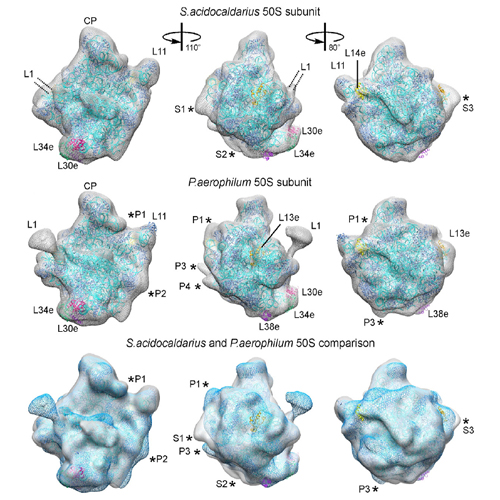Proteomic Characterization of Archaeal Ribosomes Reveals the Presence of Novel Archaeal-Specific Ribosomal Proteins
04-Dec-2010
JMB, 2011, 405, 1215-32 published on 04.12.2010
Protein synthesis occurs in macromolecular particles called ribosomes. All ribosomes are composed of RNA and proteins. While the protein composition of bacterial and eukaryotic ribosomes has been well-characterized, a systematic analysis of archaeal ribosomes has been lacking. Here we report the first comprehensive two-dimensional PAGE and mass spectrometry analysis of archaeal ribosomes isolated from the thermophilic Pyrobaculum aerophilum and the thermoacidophilic Sulfolobus acidocaldarius Crenarchaeota. Our analysis identified all 66 ribosomal proteins (r-proteins) of the P. aerophilum small and large subunits, as well as all but two (62 of 64; 97%) r-proteins of the S. acidocaldarius small and large subunits that are predicted genomically. Some r- proteins were identified with one or two lysine methylations and N-terminal acetylations. In addition, we identify three hypothetical proteins that appear to be bona fide r-proteins of the S. acidocaldarius large subunit. Dissociation of r- proteins from the S. acidocaldarius large subunit indicates that the novel r- proteins establish tighter interactions with the large subunit than some integral r-proteins. Furthermore, cryo electron microscopy reconstructions of the S. acidocaldarius and P. aerophilum 50S subunits allow for a tentative localization of the binding site of the novel r-proteins. This study illustrates not only the potential diversity of the archaeal ribosomes but also the necessity to experimentally analyze the archaeal ribosomes to ascertain their protein composition. The discovery of novel archaeal r-proteins and factors may be the first step to understanding how archaeal ribosomes cope with extreme environmental conditions.











